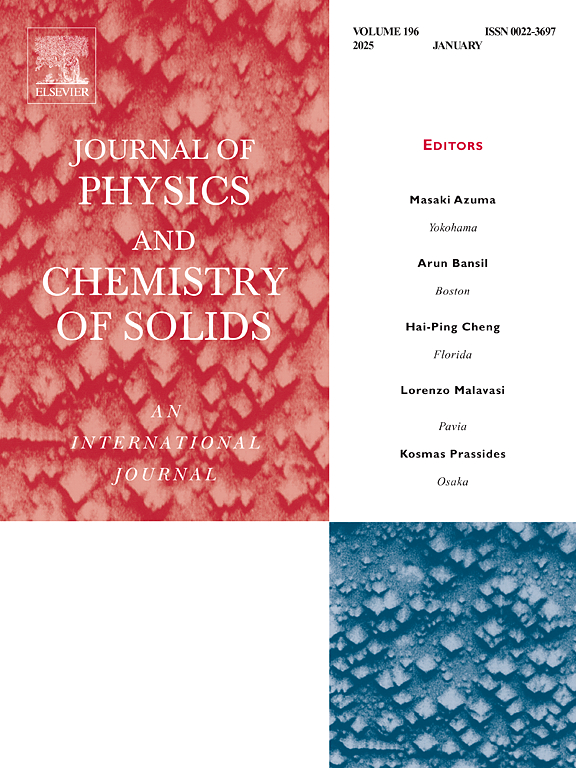Catalytic effect of TiF3 on hydrogenation and dehydrogenation of Mg-based hydrogen storage alloy prepared by milling
IF 4.3
3区 材料科学
Q2 CHEMISTRY, MULTIDISCIPLINARY
引用次数: 0
Abstract
Transition metals or their derivatives are effective catalysts for enhancing the properties of Mg-based hydrogen storage materials. This study focuses on the Ce5Mg85Ni10+x wt.%TiF3 (x = 0–7) (Ce5Mg85Ni10+xTiF3 (x = 0–7)) composites fabricated by mechanical milling. Moreover, the additive TiF3 can decrease the initial dehydrogenation temperature of MgH2 and slightly ameliorate the thermodynamic property. Specifically, the alloy with 5 wt% TiF3 exhibits the optimal activation performance and kinetics properties which can absorb 4 wt% hydrogen in 24 s at 473 K and desorb 3 wt% hydrogen in 168 s at 573 K. Because of its lowest apparent activation energy for hydrogen desorption (55.87 kJ/mol). Furthermore, the onset dehydrogenation temperature of the alloy with 5 wt% TiF3 is about 530.4 K, which is believed to be associated with a decline in the thermal stability of magnesium hydride caused by the addition of TiF3.
求助全文
约1分钟内获得全文
求助全文
来源期刊
CiteScore
7.80
自引率
2.50%
发文量
605
审稿时长
40 days
期刊介绍:
The Journal of Physics and Chemistry of Solids is a well-established international medium for publication of archival research in condensed matter and materials sciences. Areas of interest broadly include experimental and theoretical research on electronic, magnetic, spectroscopic and structural properties as well as the statistical mechanics and thermodynamics of materials. The focus is on gaining physical and chemical insight into the properties and potential applications of condensed matter systems.
Within the broad scope of the journal, beyond regular contributions, the editors have identified submissions in the following areas of physics and chemistry of solids to be of special current interest to the journal:
Low-dimensional systems
Exotic states of quantum electron matter including topological phases
Energy conversion and storage
Interfaces, nanoparticles and catalysts.

 求助内容:
求助内容: 应助结果提醒方式:
应助结果提醒方式:


